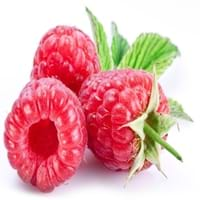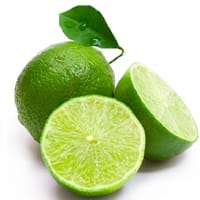Health Benefits
Cancer prevention, Heart care, Prevents macular degeneration, Reduces blood circulation problems
Arthritis treatment, Cholera treatment, Gout treatment, Heart care, Piles treatment, Scurvy treatment
General Benefits
Anti-inflammatory properties, Controls blood sugar levels, Digestive aid, Eye care, Helps in weight loss
Cures fever, Digestive aid, Eye care, Maintains healthy cholesterol level, Treatment of common cold
Skin Benefits
Anti-aging benefits, Brightens and lightens complexion
Anti-aging benefits, Skin rejuvenation, Treatment of acne, Treatment of dark spots
Hair Benefits
Acts as moisturizer, Regulates hair growth, Shiny hair
Promotes longer and healthier hair, Treatment of dandruff
Allergy Symptoms
Breathing difficulty, Eczema, Hives, Itching, Nasal congestion, Runny nose, Sneezing, Watery eyes, Wheezing
Breathing difficulty, Coughing, Eye irritation, Hives, Inflammation, Nasal congestion, Runny nose, Skin rash, Wheezing
Side Effects
Allergic reaction
Chances of sunburn
Best Time to Eat
Best if taken as a breakfast (or empty stomach), As a snack in the late afternoon, Don't eat after meal, Morning time (before lunch)
Along with meal, Best to drink warm water with lime on an empty stomach, Don't consume at night and before bed
Vitamin B5 (Pantothenic Acid)
Vitamin C (Ascorbic Acid)
Vitamin K (Phyllochinone)
Calories in Fresh Fruit with Peel
Not Available
Calories in Fresh Fruit without Peel
Not Available
Calories in Frozen Form
Not Available
Calories in Dried Form
Not Available
Type
Berry
Citrus, Tree fruit
Season
Summer
All seasons
Varieties
Amity, August Red, Boyne, Canby, Caroline, Comet, Dinkum, Dorman Red, Latham, Meeker, Black Hawk, Hayda, Lauren, Meeker and Latham
Key lime, Persian lime, Kaffir lime, Desert lime, Palestine Sweet Lime, Mexican Sweet Lime, Mary Ellen Sweet Lime
Color
Black, Purple, Red, Yellow
Green
Inside Color
Pink
Light Green
Origin
Europe, North Asia
India
Soil Type
Sandy loam
Clay loam, Sandy loam
Climatic Conditions
Cold
Sunny, Warm to hot climate
Facts about
- There are more than 200 varieties of raspberries.
- In USA, 90% of the raspberries are grown in Washington, California and Oregon.
- They do not ripe after they are picked.
- A raspberry contain 100 to 120 seeds.
- Lime is the called as the powerhouse of flavors.
- Fresh lime juice is so acidic that it can dissolve concrete.
- Limes are more fragrant and acidic than lemons.
- Persian limes are almost seedless and thorn less.
Top Producer
Russia
China
Other Countries
Azerbaijan, Canada, Mexico, Poland, Serbia, Spain, Ukraine, United Kingdom, United States of America
Argentina, Brazil, India, Mexico
Top Importer
United States of America
United States of America
Top Exporter
Poland
Mexico
Botanical Name
Rubus Idaeus
Citrus aurantifolia
Synonym
Not Available
not available
Subkingdom
Tracheobionta
Tracheobionta
Division
Magnoliophyta
Magnoliophyta
Class
Magnoliopsida
Magnoliopsida
Species
R. idaeus
C. aurantifolia
Generic Group
Rose
Citrus fruit
Difference Between Raspberry and Lime
We might think that Raspberry and Lime are similar with respect to nutritional value and health benefits. But the nutrient content of both fruits is different. Raspberry and Lime Facts such as their taste, shape, color, and size are also distinct. The difference between Raspberry and Lime is explained here.
The amount of calories in 100 gm of fresh Raspberry and Lime with peel is 53.00 kcal and Not Available and the amount of calories without peel is Not Available and 30.00 kcal respectively. Thus, Raspberry and Lime belong to Low Calorie Fruits and Low Calorie Fruits category.These fruits might or might not differ with respect to their scientific classification. The order of Raspberry and Lime is Rosales and Sapindales respectively. Raspberry belongs to Rosaceae family and Lime belongs to Rutaceae family. Raspberry belongs to Rubus genus of R. idaeus species and Lime belongs to Citrus genus of C. aurantifolia species. Beings plants, both fruits belong to Plantae Kingdom.









